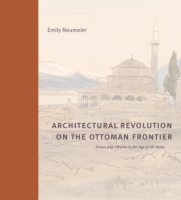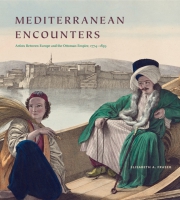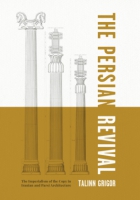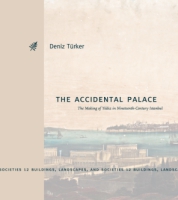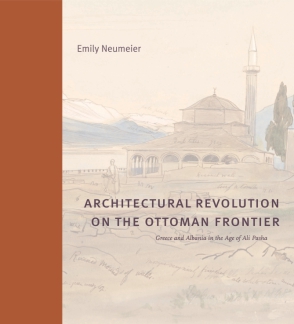
Architectural Revolution on the Ottoman Frontier
Greece and Albania in the Age of Ali Pasha
Emily Neumeier
Architectural Revolution on the Ottoman Frontier
Greece and Albania in the Age of Ali Pasha
Emily Neumeier
“Architectural Revolution on the Ottoman Frontier is a touchstone contribution—empirically and methodologically—to the study of the imperial periphery in art and architectural history. It convincingly makes its case with rigorous archival and documentation work that the Ottoman hinterland was indeed a site of generative artistic production, enriched rather than limited by its distance from the long shadow of Constantinople.”
- Description
- Reviews
- Bio
- Table of Contents
- Sample Chapters
- Subjects
Ali Pasha is still a household name in present-day Greece and Albania, where he served as Ottoman governor from 1788 to 1822. To consolidate his rule over an incredibly diverse population, the governor set out on a sweeping building program that included mosques, palaces, military fortifications, dervish lodges, and even Orthodox Christian monasteries. Drawing upon a wealth of primary sources, Neumeier reveals how Ali Pasha’s buildings shifted the sociopolitical order by testing the standards of patronage established by the imperial court and relocating administrative authority from center to province. To reconstruct the world that Ali Pasha built, Neumeier draws from both extensive fieldwork and abundant archival material, whose far-flung nature—from Istanbul to London—reflects the impressively wide scope of Ali Pasha’s influence.
Rigorously researched and packed with fascinating stories, this book presents an innovative spatial history of the Ottoman frontier during the age of revolutions, a pivotal period in the late eighteenth and early nineteenth centuries when there was no obvious blueprint for power. It will be of interest to specialists in art and architectural history, the Ottoman Empire, and Mediterranean, Islamic, and Modern Greek studies.
“Architectural Revolution on the Ottoman Frontier is a touchstone contribution—empirically and methodologically—to the study of the imperial periphery in art and architectural history. It convincingly makes its case with rigorous archival and documentation work that the Ottoman hinterland was indeed a site of generative artistic production, enriched rather than limited by its distance from the long shadow of Constantinople.”
Emily Neumeier is Assistant Professor of Islamic Art and Architecture at Temple University.
List of Illustrations
Acknowledgments
Note on Translations and Transliterations
Introduction
1. “Amidst No Common Pomp”: Redefining the Governor’s Palace
2. Revising the Rules of Engagement: Fortifications on a Liquid Frontier
3. Building Local Support: Patronage for Multiconfessional Communities
4. Poetic Justice: Experiments in Architectural Epigraphy
Conclusion
Notes
Bibliography
Index
Also of Interest
Mailing List
Subscribe to our mailing list and be notified about new titles, journals and catalogs.
